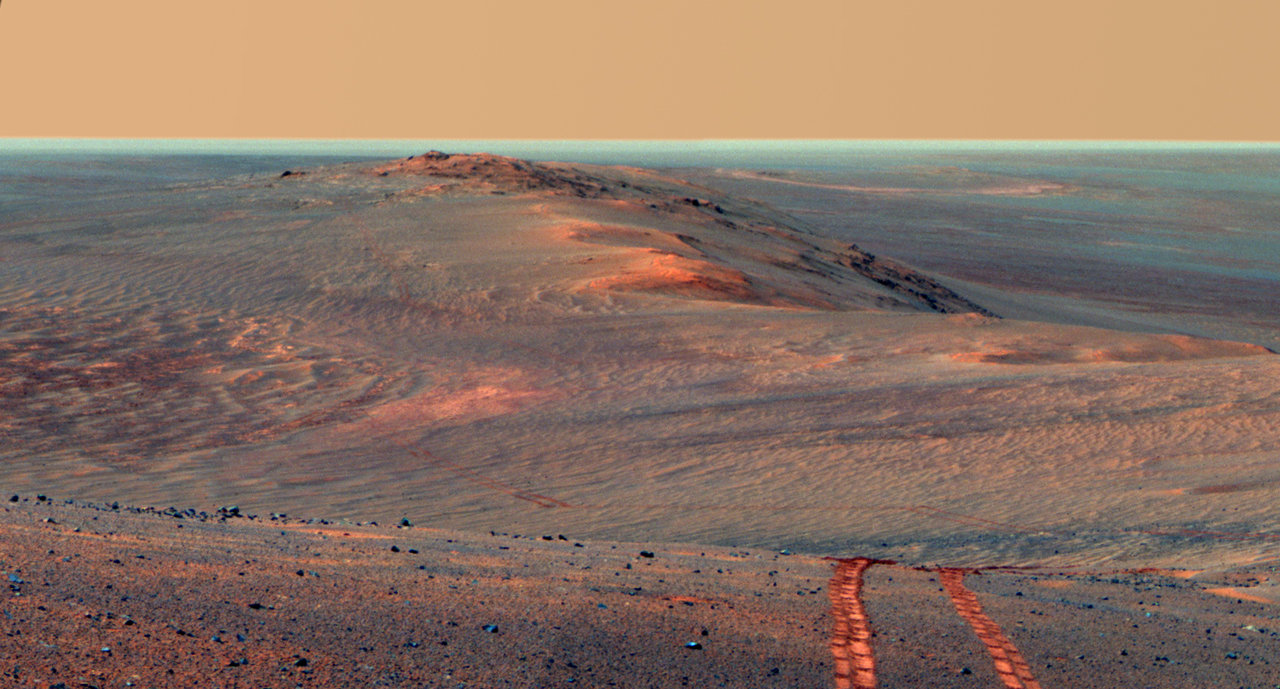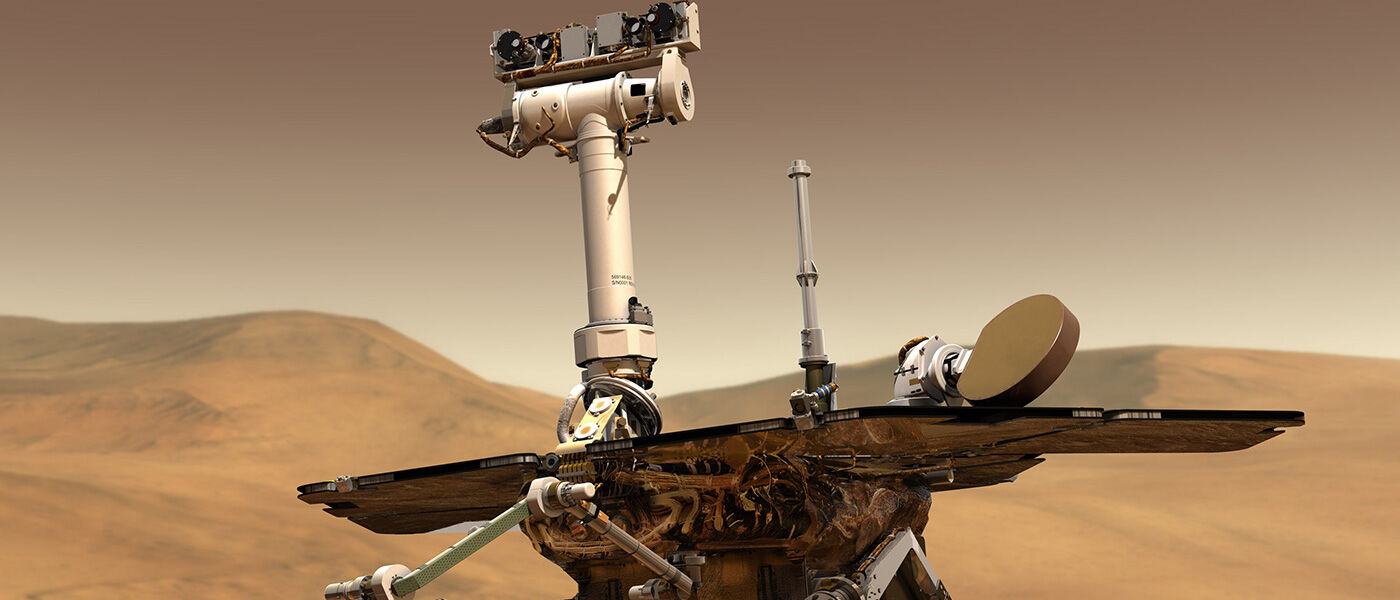LSC says goodbye to the NASA Opportunity rover

It’s the end of an era! This week, NASA announced that the Opportunity rover – the longest-running Mars rover – was officially dead.
Only meant to last 90 days, Opportunity ended up spending 15 years studying the surface of Mars, hunting for evidence of water on the Red Planet, and proving that rovers are capable of overcoming obstacles and surviving long periods of time.
The last time we heard from Opportunity was June 10, 2018, when a dust storm covered almost the entire surface of Mars. Since Opportunity got its power from the Sun via solar panels, this proved to be an issue when large amounts of dust in the air blocked the Sun’s rays. Therefore, that blocked any power for the rover.
All weekend, we’ll be paying tribute to this incredible spacecraft in our planetarium. Stop by our all-live show, “Wonders of the Night Sky,” and learn how Opportunity contributed to the future of space exploration.

Before you join us, take a look back at some of the spacecraft’s most memorable moments:
Arrival on Mars: In 2004, the 384-pound golf-cart sized Opportunity rover touched down on Mars. Six weeks later, Opportunity identified its first evidence for past water: sulfates and crystals that on Earth are formed in the presence of water.
More Proof of Water: Shortly after its arrival on Mars, Opportunity also spotted stones consisting of the mineral hematite, which are formed underwater. The rover later found even more potential evidence of water from a cracked rock that may have formed after being soaked in water.
A Dangerous Hurdle: In 2005, Opportunity got stuck in the sand! The rover drove straight into a foot-tall mound of sand and was trapped there. To solve the issue, NASA teams created a similar sand trap on Earth, and tried commands on test rovers. By early June, Opportunity was set free.
Into the Victoria Crater: In 2007, a risky move was made to take Opportunity down into the Victoria Crater. This was risky because nobody could be sure the rover would be able to make its way out of the crater – but the potential to explore deeper down in the surface was worth the risk! For a year, Opportunity examined old layers of the Mars rock, giving scientists information and evidence that the layers were likely formed and shaped by water. Opportunity ended up rising to the occasion and successfully made its way out in 2008.
Breaking Records: In 2014, Opportunity set a record, becoming the mission to have driven the fastest on another world. Previously held by the Soviet Union’s lunar Lunokhod 2 rover in 1973 for driving 25.01 miles, Opportunity continued on to drive further than the distance of a marathon! The last odometer reading of Opportunity measured 28.06 miles.
Mars Rocks: In 2015, Opportunity spotted never-before-seen kinds of rocks with high amounts of silicon and aluminum.
We’ll miss you, Opportunity! Look back with us this weekend in the Jennifer Chalsty Planetarium, the biggest planetarium in the Western Hemisphere, during our all-live show “Wonders of the Night Sky.” Click here to get showtimes and see what else is playing.
